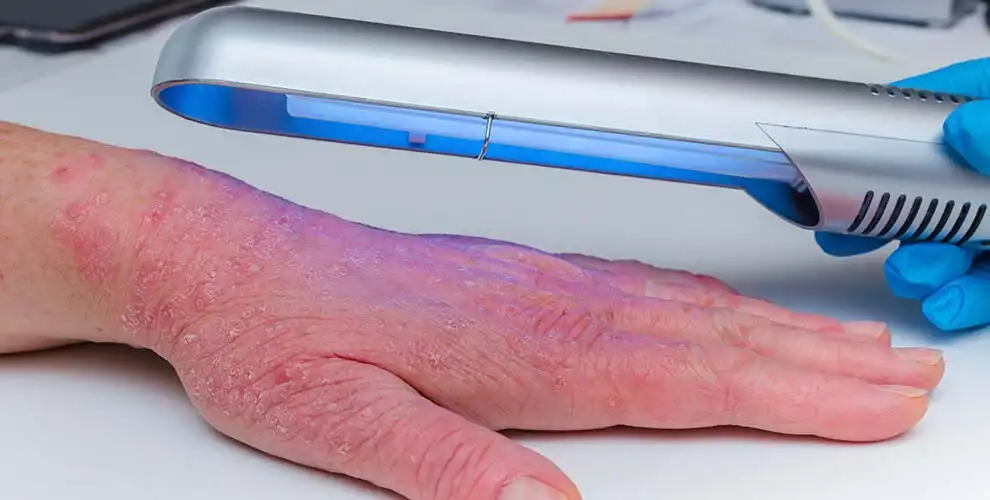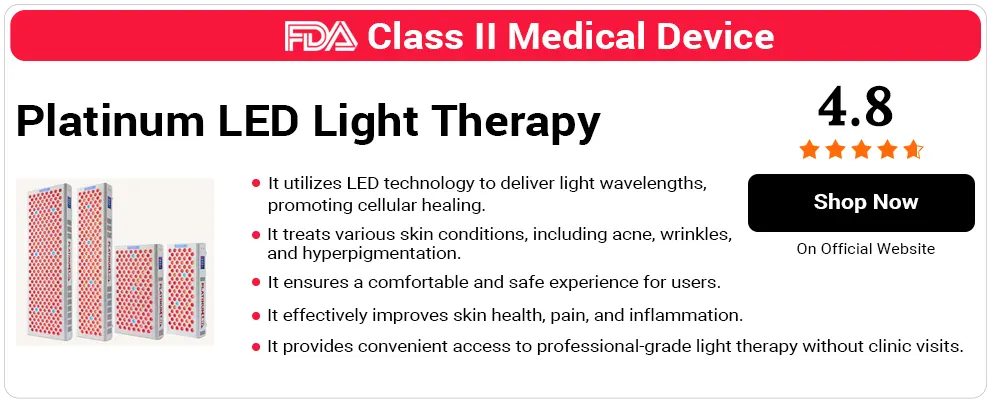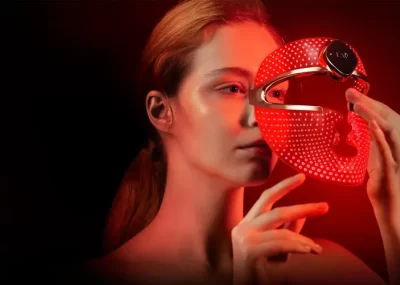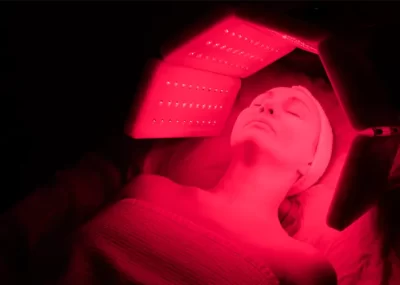What Are Psoriasis and Eczema?
Psoriasis and eczema are two distinct skin conditions that share some overlapping symptoms, such as inflammation, itchiness, dryness, and cracking. However, psoriasis is an autoimmune condition which leads the body to target healthy cells, so they grow out of control and also cause symptoms such as raised lesions, scales, or plaques.
While the condition may appear anywhere on the body, it’s most likely to occur on the knees, elbows, lower back, and scalp, and may lead to intense itchiness and even pain in some cases.
Eczema, or atopic dermatitis, is not an immune system issue and it tends to go along with asthma or allergies. It occurs due skin barrier damage which leads to extreme itchiness, redness, inflammation, raised bumps, cracked skin, and crusting.
According to Dr. Esther Kim, dermatology professor at Columbia University Medical Center, “Intense itch is a hallmark of eczema. Because of the itch, patients often suffer from a persistent itch-scratch cycle that can lead to thickening of skin and scratches that render the skin prone to superficial skin infections [1].”
What Are the Treatment Options for Psoriasis and Eczema?
While Psoriasis and eczema differ in their causes and development, the treatment options are quite similar for both conditions. In mild cases there are over the counter creams which may provide some relief.
Common dermatological prescription treatments include topical corticosteroids to reduced inflammation or emollients to boost hydration and decrease moisture loss.
According to the Mayo Clinic retinoids may be an effective treatment for psoriasis [2] but physicians do not recommend it for eczema. There are also oral and injectable medications available to treat both conditions.
One of the best current treatments is red light therapy for psoriasis and eczema. This method used diodes of LED laser into the skin to decrease inflammation and promote deep healing.

How Does Light Therapy Work to Treat Psoriasis and Eczema?
LED light therapy delivers photons of laser light into the body at different depths depending on the wavelength used. Blue light, for example, works at wavelengths of 450-495 nm, and operates mostly at the surface level.
Red light is at wavelengths of 620-750 nm, and penetrates slightly more under the surface of the skin. Infrared light falls into the 780-1000 range and delves deep into the body for powerful healing.
The low level light therapy improves cell performance, increasing fibroblasts, and opening up the mitochondrial pathways. It’s great for collagen and elastin production. I mainly use red light therapy for reducing inflammation and pain that’s associated with scarring/ surgery or skin issues like dermatitis, eczema, and rosacea, claims Daryl Stubbs.
A review of the research by Daniel R. Opel, MD, Erika Hagstrom, et al in The Journal of Clinical and Aesthetic Dermatology explored the benefits of different wavelengths of LED diodes.
They found that the specific advantages vary based on the wavelengths, and generally include healing wounds, rejuvenating the skin, reducing acne and wrinkles, and preventing sunburn [3].
As we explained in our article about the LED light therapy bed, the photons transmit energy to your cells, stimulating the mitochondria to produce higher levels of adenosine triphosphate (ATP). ATP provides cellular energy for your entire body, and its increase has a number of benefits in treating medical and skin issues.
 Regular treatment with blue light therapy may effectively heal psoriasis
Regular treatment with blue light therapy may effectively heal psoriasisA study on white rabbits published in Frontiers in Pharmacology by researchers Harshini Sarojini and Alexander Bajorek, et al concluded that delivery of intercellular ATP promoted skin wound healing in a period of 7-14 days [4].
When it comes to red light therapy for eczema and psoriasis, the technology can decrease inflammation, promote repair of damaged tissue, and restore the skin barrier.
Research shows that it may significantly lessen the inflammation and itchiness of each condition, heal psoriasis scales, and in some cases cure scalp psoriasis.
Board certified dermatologist and Harvard professor Elizabeth H. Page, MD, explained, “Light therapy works by chasing away the white blood cells that trigger the inflammation, so light therapy is anti-inflammatory [5].”
A review in Lasers in Medical Science by Elisabetta Sorbellini, et al discussed the safety and efficacy of LED therapy in treating a variety of dermatological conditions and diseases [6].
Does Red Light Therapy Help Psoriasis and Eczema?
As these two conditions differ somewhat in their development, presentation, and symptoms, let’s look at the research supporting the efficacy of LED light therapy for psoriasis, and then consider the studies on red light therapy and eczema separately.
Red Light Therapy: Psoriasis
Psoriasis is often resistant to common treatment methods, depending on its severity. How effective is light therapy for psoriasis? The research on the benefits of LED light in improving the condition are quite positive.
A review of the research in Lasers in Medical Science by Ping Zhang and Mei X. Wu showed the effectiveness of red and NIR infrared light for psoriasis due to its deep penetration and healing benefits [7].
A study in the Journal of the European Academy of Dermatology and Venereology by M M Kleinpenning, et al. showed the effectiveness of both blue and red light for psoriasis, with blue light being the most beneficial for this condition [8].
Red Light Therapy: Eczema
While red light therapy for dermatitis has some impact on decreasing the dominant symptoms, blue light is actually a more effective wavelength for lessening inflammation and promoting healing.
A 5-treatment study published in PLOS ONE by Detlef Becker and Elise Langer, et al concluded that blue light helped treat atopic dermatitis and may help control the condition over the long term [9].
Here you can see the pictures of eczema and psoriasis treated by red light therapy
 Before and after pictures of patient with eczema
Before and after pictures of patient with eczema Before and after pictures of patient with Psoriasis
Before and after pictures of patient with PsoriasisRed Light Therapy – Risks and Possible Side Effects
As we stated in our review of Vital Red Light, the research supports the safety of LED light therapy in general, and there are few associated risks or side effects.
You should not use this technology if you have tumors or other severe skin diseases without checking with a dermatologist first. In addition, there are several things you should look for when selecting a product.
Make sure the device that you buy is FDA cleared, and follows strict safety standards in manufacturing and testing. In addition, ensure that EMF levels are at either zero or close to it, so that you are not exposed to radiation.
Board certified dermatologist Dendy Engelman stated, “This technology is so great because it is completely painless and doesn’t cause damage to the skin or downtime [10].”
Other Skin Health Benefits of LED Light Therapy
In addition to using red light therapy for eczema or psoriasis treatment, the technology stimulates levels of collagen and elastin in the skin to tighten, improve elasticity, and smooth wrinkles, lines, and scars on the surface.
It increases hyaluronic acid, which deeply hydrates the complexion, prevents dryness, and plumps the skin to further smooth signs of age. In addition, LED light promotes cell turnover for a fresher, healthier complexion.
Research shows that blue light effectively lessens acne by decreasing inflammation and killing the bacteria that causes the condition.
Dr Engleman explains, “Red light therapy (RLT) involves exposing the skin to safe wavelengths of light in order to address a number of skin concerns, including signs of aging, stretch marks, scars, hyperpigmentation, and acne [10].”
A study published in the Journal of Photochemistry and Photobiology B: Biology by Magali Bonnans and Linda Fouque, et al showed the efficacy of blue light in the treatment of inflammatory acne [11].
We Provide an Array of Light Therapy Devices That Help Relieve Your Skin Conditions
We offer the best selection of LED light therapy for eczema, psoriasis, and numerous other skin and health conditions. With a large selection of full, half body, and targeted panels and devices, you’re sure to find the best product to bring your skin back to optimal health.
We covered the solawave acne reviews, it is the best skincare for redlight therapy as it diminishes the signs of aging, acne scars, and breakouts.
FAQs
Q: Does Red Light Therapy Help Psoriasis?
A: When it comes to red light therapy and psoriasis, the research supports the effectiveness of the technology as a treatment method. The LED light at various wavelengths helps to decrease symptoms like inflammation and itching, and it can promote faster healing of plaques. Studies especially show the benefits of red and infrared light therapy for psoriasis.
Q: How Long Does It Take Red Light Therapy To Work For Psoriasis?
A: Each person will differ somewhat in the speed of their results, depending on the seriousness of the condition and individual differences in skin. In general LED light therapy for psoriasis takes and average of 2-4 weeks of consistent treatments to see improvement.
Q: Is Red Light Therapy Good For Eczema?
A: There is evidence indicating the benefits of red light therapy for dermatitis, or eczema. What color light therapy is best for eczema? Research shows that blue LED wavelengths are ideal for decreasing the inflammation, itchiness, and other symptoms associated with the condition.
Q: How Often Should You Do Red Light Therapy For Eczema?
A: Each device will be somewhat different, and you should read the associated user’s guide carefully for specific directions.
However, in general, for optimal red light therapy eczema before and after results, you should follow a treatment protocol of 10 minute sessions 3 times a week.
Q: Can I Use Light Therapy For Eczema at Home?
A: While in the past red light therapy was available exclusively in
dermatology clinics and salons, today there are a wide range of quality, safe, highly effective devices for home use.
If you suffer from eczema or psoriasis, consider purchasing a device for regular treatment. While you’ll get the best red light therapy for eczema and psoriasis in a professional clinic, home devices are highly effective as well. You can use them as your only method, or combine professional dermatological sessions with a home-based device.
Q: Is Red Light Therapy Effective For Healing Scalp Psoriasis?
A: While some people opt for treating scalp psoriasis naturally, LED light therapy is a highly effective option in may cases. The American Academy of Dermatology states that the most effective light therapy for scalp psoriasis is the excimer laser, which offers a form of narrowband UVB [12].
Conclusion
Skin conditions like eczema and psoriasis have unpleasant symptoms like itching, inflammation and redness, cracked skin, and even plaques on the surface in the case of psoriasis. While there are some medical options available like topical creams, pills, and injections, research shows that red light therapy is a promising option for psoriasis and eczema treatment.
You can make an appointment with a dermatologist, but today there are a wide range of highly effective, safe red light therapy devices on the market for home use, and they offer powerful benefits in dealing skin conditions. We also covered mito red light review the product focuses on health and wellness.
Red light therapy is a safe technology which offers no real risks or significant side effects. Make sure you choose a brand with FDA cleared devices, to ensure that the company follows strict safety standards in manufacturing. Have a look through our selection of high quality brands to find the product that is right for you.
We also covered the health article platinum biomax 900 which focuses to improve brain health, improving mood, and repairs damage muscles with FDA-approved and claims to have no side effects and is risk-free.














